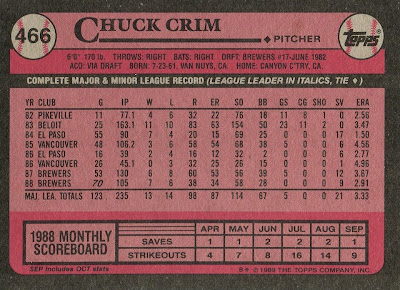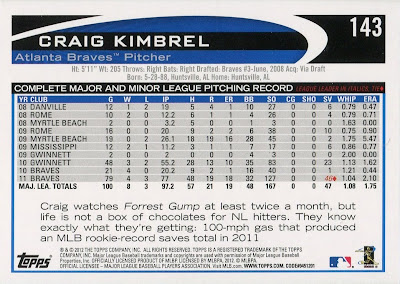When I was a kid in the 1980’s I collected a ton of cards. I probably had 2-3 dozen of those 800 count cardboard boxes until I eventually managed to convince my parents that I needed to have the monster boxes. What did they hold, 3200 cards or something like that? As long as they were organized and put away, my parents didn’t seem to mind the ever expanding collection.
As many of those as I had, I only had 3 binders that held cards. And not the fancy, real card binders either. Mine were the regular, repurposed, school sized binders where the last half inch or so of the plastic pages hung out of the right side when it closed. I had to be very careful not to jam them into the bookcase when I was finished with them or risk ruining the three cards on the outside edge of every page.
One binder, the largest, held cards from my favorite team. This binder was FULL. By the time I had slowed down my collecting, I was on the verge of having to break out a new binder for the collection. At any given time, this binder was sorted by brand, by year or by player. Needless to say, these cards aren’t/weren’t in the greatest condition as I was always rearranging them on a whim.
The second binder had what I call my “Beckett” cards. These were cards that were actually listed in Beckett Baseball Card magazine. For those of you who remember, commons weren’t listed individually in the magazine, so if Beckett had a price for it, it had to be worth something, right? This binder was essentially my showroom when making trades. If somebody had a card I wanted, I’d let them browse through this binder to find something "of worth" in return. Every new issue brought promotions and demotions to the binder. It wasn't particularly organized so I just filled empty slots as needed. It was pretty funny to go through this binder years later to see who was worth a quarter or more, compared to the nickel commons.
The third binder (and theme for this new blog) contained other cards of note. These players weren’t on my favorite team. They weren’t necessarily listed in Beckett (if they were, I wasn’t trading them unless I had duplicates). The common thread was that 99% of these cards all contained the phrase “League Leader in Italics, Tie ◊” on the back. These guys led the league in something, they must be good!
My buddy Matt from over at Once a Cub and I talk about baseball and card collecting quite a bit. Because of him, I’ve been lurking around the blogosphere for the last couple of months now and he’s finally convinced me to give my own blog a go. I don’t consider myself much of a writer so I’m not sure where this blog will go. I guess the plan for now is to show off some of these cards, one at a time, with a little commentary. I’m sure I have enough cards to post daily for years but we’ll see how much time I actually have!
The only rule I'll try to follow is the player must have led the league the year prior to when the card came out. So essentially, the italics would be in the latest seasonal statline, not from five seasons before.
I have a ton of blogs bookmarked and now that I have an account, I'll be officially following you guys.
Thanks for giving this blog a try! I'll work on making it "pretty" and getting a banner up and stuff too.
Ty Diamond (close enough to my real name that I thought the pseudonym/pun was worthy!)









































